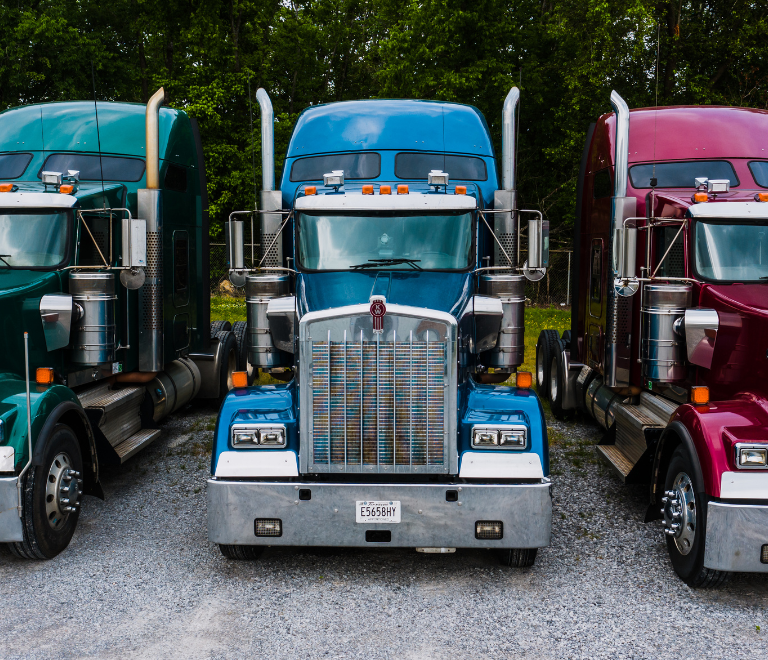In 2022, the trucking industry in the United States went through the late-cycle phase of the traditional truckload cycle, ultimately leading to the bottoming phase in 2023.
Although some progress has been made, rebalancing has slowly proceeded in October 2024.
Looking forward to 2025, the trucking industry in North America is ready to face a challenging environment impacted by shifting market dynamics and regulatory changes. These are just a few significant elements affecting the trucking industry, such as macroeconomic developments, freight necessity, equipment manufacturing, and new possibilities and issues.
The Forecast For Trucking Industry In 2025
The Overview Of The Economy
The U.S. economy is expected to slow down in 2025, with GDP growth slowing to 2% year-over-year. The slowdown is due to higher interest rates, tighter monetary policy, and consumers being less likely to spend.
Inflationary pressures still need to be higher, but the high cost of borrowing money makes it hard for businesses to spend and homes to be built.
Consumer spending is expected to stay the same but slower than in recent years. This will keep freight demand stable but not too high. The trucking forecast for 2025 will be challenging for industries that depend on fast growth, but it should still be a satisfactory year for reasonable freight demand.

Trends In The Transportation Sector And Freight
Due to a lowering freight demand and continuous adjustments in supply chain capacities, the transportation industry is anticipated to face a challenging environment in 2025. The Freight Composite Index trucking forecast a little gain; nonetheless, growth is expected to remain below forecast for the trucking industry in 2024.
- Reduced Rate Of Freight Growth: A decrease in consumer demand and adjustments to inventory levels across retail and manufacturing are expected to be the primary factors driving the slowdown in freight growth in 2025. Freight volumes will indicate a more measured climate, with little urgency in replenishment cycles, as retailers begin to maintain their stocks after the pandemic interruptions that they experienced.
- Rebalancing of Capacity Is Still Going On: Especially within the truckload industry, where efforts to rebalance the market are still underway, overcapacity is a serious concern. Since private fleets continue to take in a more significant proportion of the total freight volume, diverting it away from the spot market, the rate recovery process takes considerable time because of this dynamic, spot rates will continue to be under pressure, which will postpone the arrival of a more clear equilibrium until late 2025.
- Small Increases In Spot Rates: Although truckload spot rates have gradually increased since 2025, persistent overcapacity has restrained this trend. While they wait for the market to stabilize further, fleets are expanding cautiously. By late 2025, a more favorable pricing environment may result from the normalization of inventories and the stabilization of consumer demand. Potential increases in demand in the retail and e-commerce sectors may drive freight demands.
Class 8 Trucks: Demand Changes And Inventory Overhang
High inventory levels from 2024 and cautious fleet operators will reduce Class 8 truck production in 2025. While vocational segments will sustain the Class 8 market, for-hire overcapacity will undermine it. Production should stabilize rather than expand as fleets work through extra inventories. Regulatory forces, especially emissions compliance, will affect purchase behavior but may need more to overcome slower category growth.
Class 5-7 Medium-Duty Vehicles: Reduction In Production
Medium-duty truck production will fall in 2025 due to inventory issues and fleet owners’ economic conservatism. Body-builder supply chain constraints have hurt market performance and are projected to curb output. Improvements in inventory management and supply chain conditions are needed for a steady recovery in the second half of 2025.
Trailers: Expecting To Recover Gradually
With transportation demand cooling, trailer production is expected to decline in 2025. Replacement trailers, especially refrigerated ones, are still needed, but fleets are delaying capital investments owing to economic uncertainty. Overcapacity will limit production for most of the year, but growth is expected in the second half as the market balances.
Drivers Of The Market And Regulations
Regulatory changes will influence market activity in early 2025. Five states’ CARB Clean Truck Regulation will spur fleet modifications, especially in emissions-heavy vehicles. As federal and state incentives and infrastructure investments increase, zero-emission vehicles (ZEVs) are gaining popularity. New charging infrastructure is intended to allow fleet integration of battery-electric and hydrogen fuel cell trucks beyond pilot programs.



